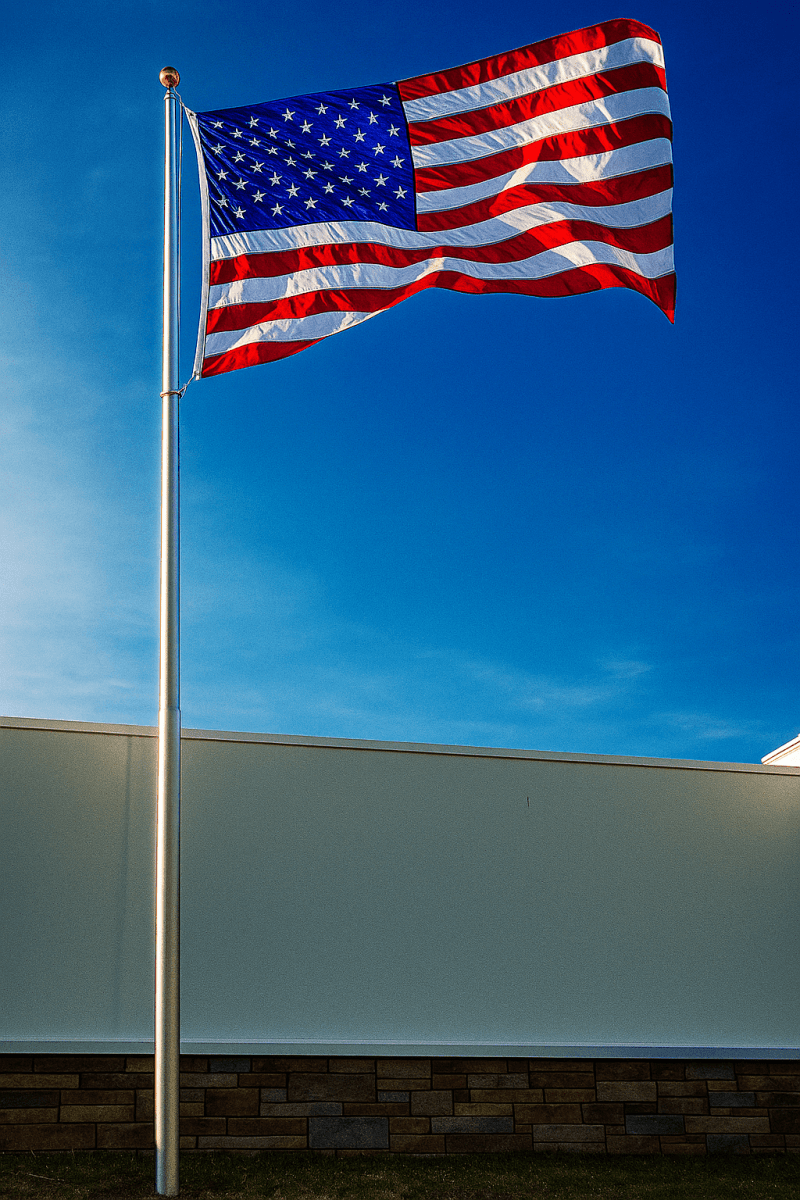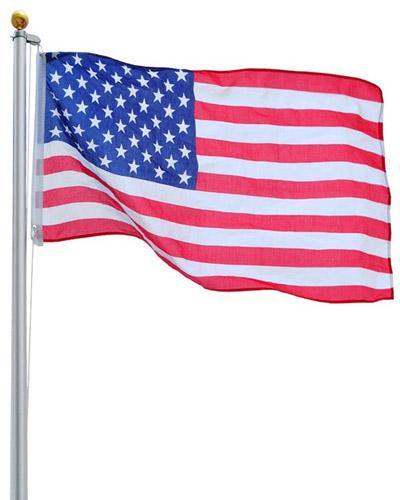Your American flag deserves the same respect whether it waves from your front porch or stands in your garden. Proper flag maintenance extends far beyond simple patriotic duty. It protects your investment, preserves the flag’s dignity, and demonstrates genuine respect for what it represents. Nylon flags offer exceptional durability compared to other materials, yet they still require thoughtful attention to maintain their vibrant appearance and structural integrity over time.
Caring for your flag properly means understanding its unique characteristics and responding to the challenges that weather, sun, and time present. When you learn the ways to properly maintain and clean your nylon flag, you ensure that your symbol of freedom continues to inspire pride in your home for years to come.
The Basics of Nylon Flags
Nylon flags are lightweight, dry quickly, and hold their shape well, making them a top choice for residential display. They fly beautifully in light wind and retain color better than cotton. These flags perform best in mild wind and fair weather, though they’re tough enough to weather the occasional extremes. However, heat, UV exposure, and rough contact can damage nylon over time, leading to warping, fading, snags, and so forth.
How To Clean Your Nylon Flag
Regular cleaning keeps your flag looking sharp and extends its life. Use the following tips to ensure gentle, effective cleaning.
Hand Washing vs. Machine Washing
Hand washing provides maximum control over the cleaning process, making it ideal for flags showing signs of wear or previous damage. Fill a large basin with cool water and work gently with your hands to remove dirt and grime without stressing seams or creating new problems.
Machine washing works well for newer nylon flags that show no signs of weakness or damage. Use cold water exclusively and select the gentlest cycle available on your washer. Place the flag in a mesh laundry bag to prevent tangling with other items or catching on the machine’s agitator or drum.
Detergents and Products To Use
Mild liquid detergents designed for delicate fabrics work best for nylon flag cleaning. These products remove dirt and stains without ingredients that might affect color stability or fabric integrity. Avoid powder detergents that might not dissolve completely in cold water, leaving residue that attracts future dirt.
Never use bleach, fabric softeners, or strong chemical cleaners on nylon flags. Bleach destroys the chemical bonds in synthetic fibers and potentially creates uneven color changes that you cannot reverse. Fabric softeners coat the fibers with residue that interferes with the flag’s natural drape and wind response.
Drying Your Flag
Air-drying preserves nylon flags better than any mechanical drying method. Lay the flag flat on clean towels in a shaded area with good air circulation, or hang it carefully to avoid creating creases. Avoid direct sunlight during drying, as wet fabric is more vulnerable to UV damage.
Never put your flag in a dryer. Doing so could cause shrinkage, melting, or permanent wrinkles that affect appearance and performance. Air-drying is the only safe option for proper flag care.

Maintenance Tips To Extend the Life of Your Flag
A few simple habits can go a long way in keeping your flag looking its best season after season.
Rotate Between Multiple Flags
Switching between multiple flags helps extend their life while keeping your display looking sharp. Rotating your flags monthly reduces wear and tear and helps you catch early signs of damage. This simple habit keeps each flag in better condition and gives you time for cleaning and inspection during swaps.
Use the Right Hardware
Quality flagpole hardware significantly improves flag longevity by reducing unnecessary wear and tear. Snap hooks should operate smoothly without sharp edges that might cut fabric, while rotating truck assemblies prevent tangling when wind direction changes.
Fold It Carefully
When your flag is in storage or waiting its turn for display, being improperly folded can cause long-term damage to its fibers and structure. Fold your flag using the traditional triangular method to reduce creases and stress on the material. Store it in a cool, dry space away from light. You can also use cedar or natural repellents to guard against pests.
How To Deal With Common Flag Problems
Even with regular care, nylon flags face common issues like fading, fraying, and mildew—but most problems have simple solutions.
Fading Colors
Sun exposure causes inevitable color changes in all outdoor fabrics, but several strategies minimize fading damage. For example, rotating between multiple flags reduces exposure time for each one. Likewise, periodic flag repositioning ensures even wear patterns. Some homeowners apply UV-protective sprays designed for outdoor fabrics, though results vary by product quality.
Fraying and Seam Damage
Minor fraying responds well to careful trimming with sharp scissors, cutting perpendicular to the fabric grain to prevent further unraveling. You can stitch small seam separations by hand, using thread that matches the original color, though professional repair services often provide better long-term results.
Evaluate repair costs against replacement costs when making decisions about flag restoration. Extensive damage requiring professional repair might exceed the cost of a new flag, making replacement the more economical choice.
Mold or Mildew
White vinegar solutions effectively remove mold and mildew stains from nylon flags without damaging the fabric or colors. Mix equal parts white vinegar and cool water, then soak the flag for 30 minutes before gently scrubbing it with a soft brush.
Baking soda paste works well for stubborn mold stains. Combine three parts baking soda with one part water to create a thick mixture. Apply the paste to stained areas, let it sit for several hours, then rinse thoroughly with cool water.

When To Retire a Flag
The ways to properly maintain and clean your nylon flag can extend service life significantly, but every flag eventually requires respectful retirement. Major tears, irreversible staining, or excessive fading signal the end of a flag’s service life. When repair costs exceed replacement costs, or when damage affects the flag’s dignified appearance, retirement is the most appropriate and respectful choice.
Local VFW posts, scout troops, and civic organizations can conduct flag retirement ceremonies that honor your flag’s service while properly disposing of worn materials.
Honor Through Care
Caring for your flag shows patriotism in action, not just sentiment. A clean, well-maintained flag—whether at your front door or high in your yard—reflects respect for what it stands for and makes a strong, proud statement in your community.
If you need a flag to care for (or one to replace your current flag), shop Liberty Flagpoles. We have heavy-duty flags for sale that will stand the test of time if you maintain them well. Moreover, if you need guidance on proper flag setup, we offer installation services and resources with helpful tips and step-by-step instructions to get you started or improve your current display.







